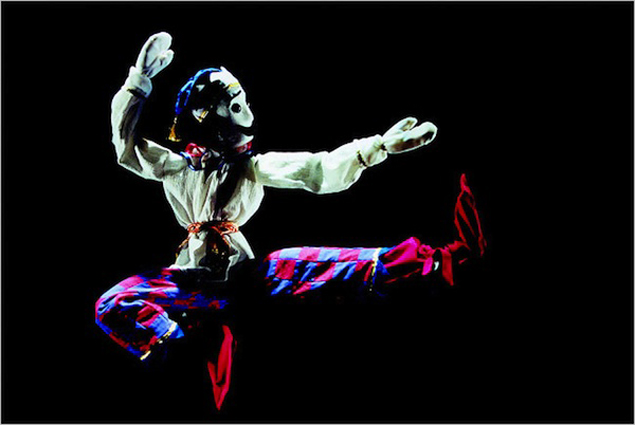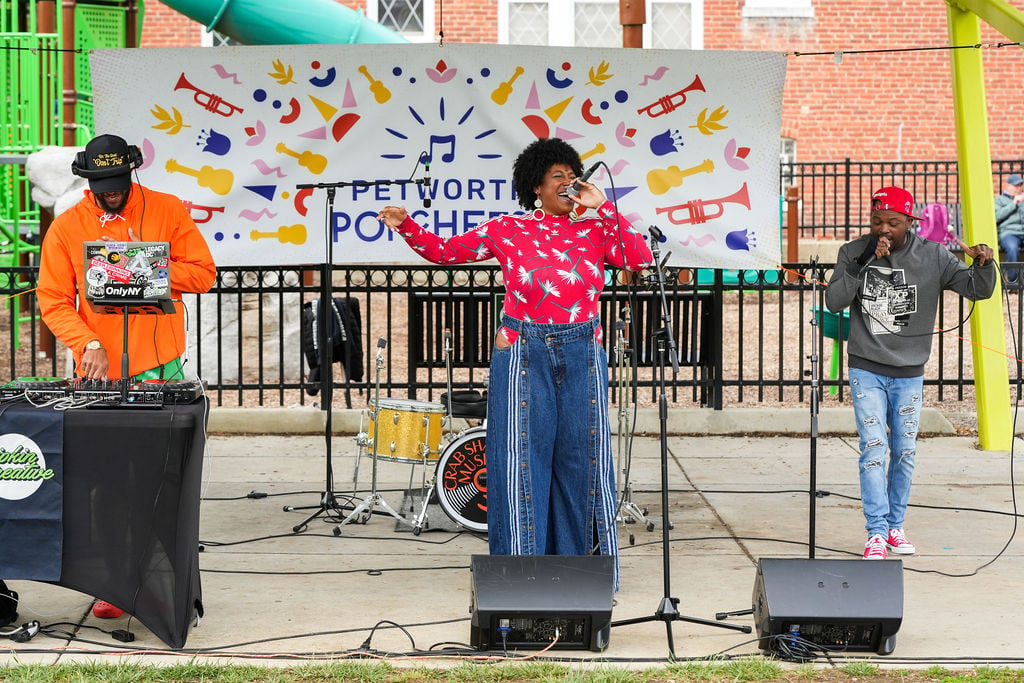![]()
Body language is an essential part of telling the story of the carnival performer Petrushka. Whether it’s the flirtatiousness seen in the ballerina’s overtures, the menace behind the Moor’s movements, or the despair visible in the slumped shoulders of Petrushka himself, words aren’t necessary to tell their tale. But what’s really impressive in this show is that those emotive gestures are coming from puppets rather than people.
Petrushka is the brainchild of renowned puppeteer Basil Twist, who’s currently in Washington for a mini festival of his works at four area venues. Currently playing at Shakespeare Theatre Company, this show is based on Igor Stravinsky’s ballet of the same name, which is about an actual puppet who comes to life, tangles with a Moor in his quest for the affections of a ballerina, and has to deal with real human feelings such as jealousy and rage. The show has no dialogue, and two skilled pianists (twin sisters Julia and Irina Elkina), seated on opposite sides of the stage, handle Stravinsky’s rippling, sometimes discordant score. The puppetry is performed by shadow figures who make objects move, rotate, and even dance against a black backdrop.
Petrushka represents one of Shakespeare’s attempts to connect younger audiences with theatrical performances, and pint-size viewers will be amused by Petrushka’s funny antics and wowed by the show’s colorful, frenetic visuals. The show’s 55-minute running time is also family friendly, though kids may be puzzled by the abstract, extended opening sequence, which involves a series of scenes in which floating geographical shapes interact with one another.
Petrushka has many engaging scenes. It’s particularly thrilling to watch the puppets dance during the ballet-within-a-ballet. Much of the imagery is figurative—a frightening bear, made up mostly of teeth and claws, looms overheard near the end of the show, likely signifying Petrushka’s upcoming demise. Floating white hands appear at various points, calling to mind how the puppet characters are not fully in control of their fate (and winking at the fact that the puppeteers are sometimes slightly visible to the viewers). The show laughs with the audience at times, whether it’s the Moor coyly shaking his rear at the viewers or an unexpected, funny reappearance by the title character when it looks like all hope for him is lost.
The mechanics behind the puppetry in Petrushka is fascinating to observe (Sunday matinee audiences got a peek behind the curtain, as the players demonstrated a scene with the lights up so the audience could see how it’s done). Three puppeteers are needed to operate each figure, and the performers can seamlessly move from one puppet to another when needed. The result is characters with playful, strikingly fluid movements.
Petrushka runs through March 25 at the Lansburgh Theatre. Tickets ($25 to $50) are available through Shakespeare Theatre’s website.


















